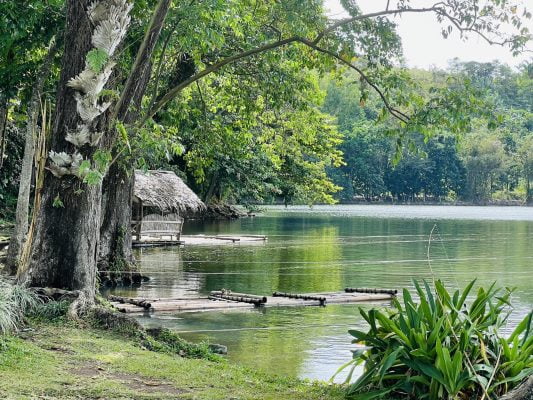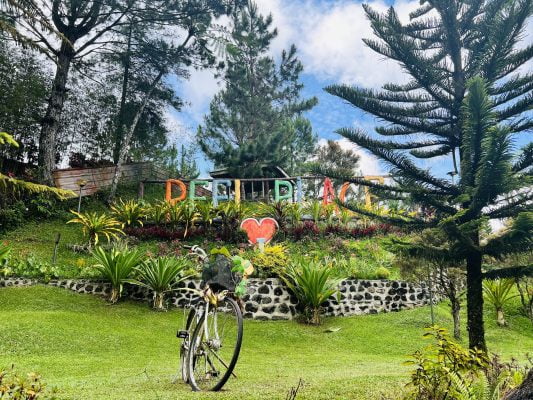Languages in the Philippines are diverse; striving to understand and learn all of them may take years. However, it is not necessary for visitors to actually speak the language of his destination in the Philippine Islands. While it would be nice to learn a few phrases, it may only serve to have a sort of deeper connection with the locals.
English Usage in the Philippines
English is taught as a second language in Filipino schools. This is mainly the reason why almost all schooled Filipinos are able to understand and speak English. In fact, Filipinos are considered the best English speakers in Asia, accounting for the influx of outsourcing businesses in the country and increase in contact center agents.
Anywhere you go in the Philippines, there will always be someone who can speak English. Now this may not be the perfect English with flawless grammar and accent but it will be understandable nonetheless. Some people refer to this imperfection as ‘carabao English’ which Rex Navarette, a US-based Filipino comedienne, uses in his acts. If you’d like to know how it sounds like, simply search for Rex Navarette on YouTube.
Local Languages
Filipino is recognized as the national language. It is often interchanged with Tagalog which actually has many variations depending on the region where it is spoken. Just like English, almost all Filipinos speak Filipino save for indigenous tribes living in remote areas.
There are about eight major regional dialects or languages in the Philippines. Most of these languages have similarities in base words and differ in the accent they are spoken with.
Tagalog
Tagalog is spoken all over the country but it is more dominant in the central and southern parts of Luzon. It is taught as a subject in Filipino schools and as part of instruction in literature, music and history. Tagalog is the main language spoken in most establishments and businesses, second to English. It is understood by almost all Filipinos as it is also the language used in local TV shows being aired nationwide.
Here are some common Tagalog sentences:
- Magandang araw! – Good day!
- Ako si (name) – My name is ______.
- Magkano? – How much?
- Salamat – Thank you.
- Walang anuman. – Don’t mention it.
Ilokano or Ilocano
This language is mostly used in the northern portion of the island of Luzon, particularly in the Ilocos Region. There are about 10 million people who speak Ilokano in the Philippines and there are a good number of Ilokano speakers in Europe, the United States, Canada and the Middle East.
Here are some Ilokano phrases and their meanings:
- Kablaaw – Hello
- Naimbag a bigat – Good morning
- Agyamanak – Thank you
- Pakada – Goodbye
Bikolano or Bicolano
Bicolano is the dominant language in the Bicol region located on the eastern tail of Luzon. There are at least three variations of the language based on geographical location: coastal, inland and Catanduanes. While this may be the case, there are still distinct similarities that keep the language recognizable from other Filipino languages.
Here are some Bikolano phrases that might be useful:
- Marhay na aga – Good morning
- Namomotan ta ka – I love you
- Ano ini? – What is this?
- Paaram – Goodbye
Hiligaynon or Ilonggo
This Filipino language is characterized by a lilting, almost melodious accent much like singing. It is spoken mostly in the western portion of the Visayas islands and in some parts of Mindanao. It is basically Visayan but the accent is what makes it distinct from others in the language group. Hiligaynon is the language spoken by the locals of Boracay and Bacolod.
You might find these words/phrases/sentences useful:
- Hu-o – Yes
- Indi – No
- Namit – Delicious
- Ambot ah- I don’t know.
- Palangga ta ka – I love you
- Salamat gid – Thank you
Cebuano
Cebuano is the language spoken in Central Visayas, Southern Mindanao and Western Mindanao. There are also many variations of Cebuano depending on the region it is spoken in. Case in point: Cebu’s Cebuano is different from Davao’s Cebuano in the sense that the former is stricter with grammar than the latter. Nevertheless, they are still within the same Visayan group of languages and they are pretty much relatable with each one.
Here are some useful Cebuano words/phrases/sentences:
- Taga diin ka? – Where are you from?
- Nasabtan nimo? – Do you understand?
- Salamat – Thank you.
- Way sapayan – You’re welcome/ don’t mention it.
- Maayo! – Great!
Waray
Waray is another Visayan language. It is spoken in the eastern regions of Visayas, particularly in the islands of Samar and Leyte. Waray is much like Cebuano and Hiligaynon, only it is spoken in a more pronounced accent. Don’t be surprised to hear a Waray speaking to each other as if they are arguing, such is the nature of their language. Waray almost always sounds like the speaker is angry about something.
Here are some Waray phrases/sentences and their meanings:
- Maupay nga aga/kulop/gab-i! – Good morning/afternoon/evening!
- Waray ko labot – I don’t care.
- Hain? – Where?
- Nawawara ako didi. – I’m lost here.
Tausug
This is the language spoken by most Muslim members of society wherever in the Philippine but it is more dominant in Sulu, Zamboanga, some parts of Palawan and Sabah, Malaysia. Most Tausug words have Arabic equivalents.
The languages spoken in the Philippines are almost as diverse as its islands. These languages have Spanish, Asian, English and other outside influences so it’s not hard to understand why there are so many variations.
This being said, it is still not hard to understand and be understood while visiting the Philippines. The moment you step on Philippine soil, you will immediately be greeted in English, Filipino or any other local language spoken at your destination. Learning the local languages will endear you to your hosts; Filipinos find it amusing and sometimes even touching to hear a foreigner speaking their language in a different accent.
Welcome to the Philippines! Mabuhay!






